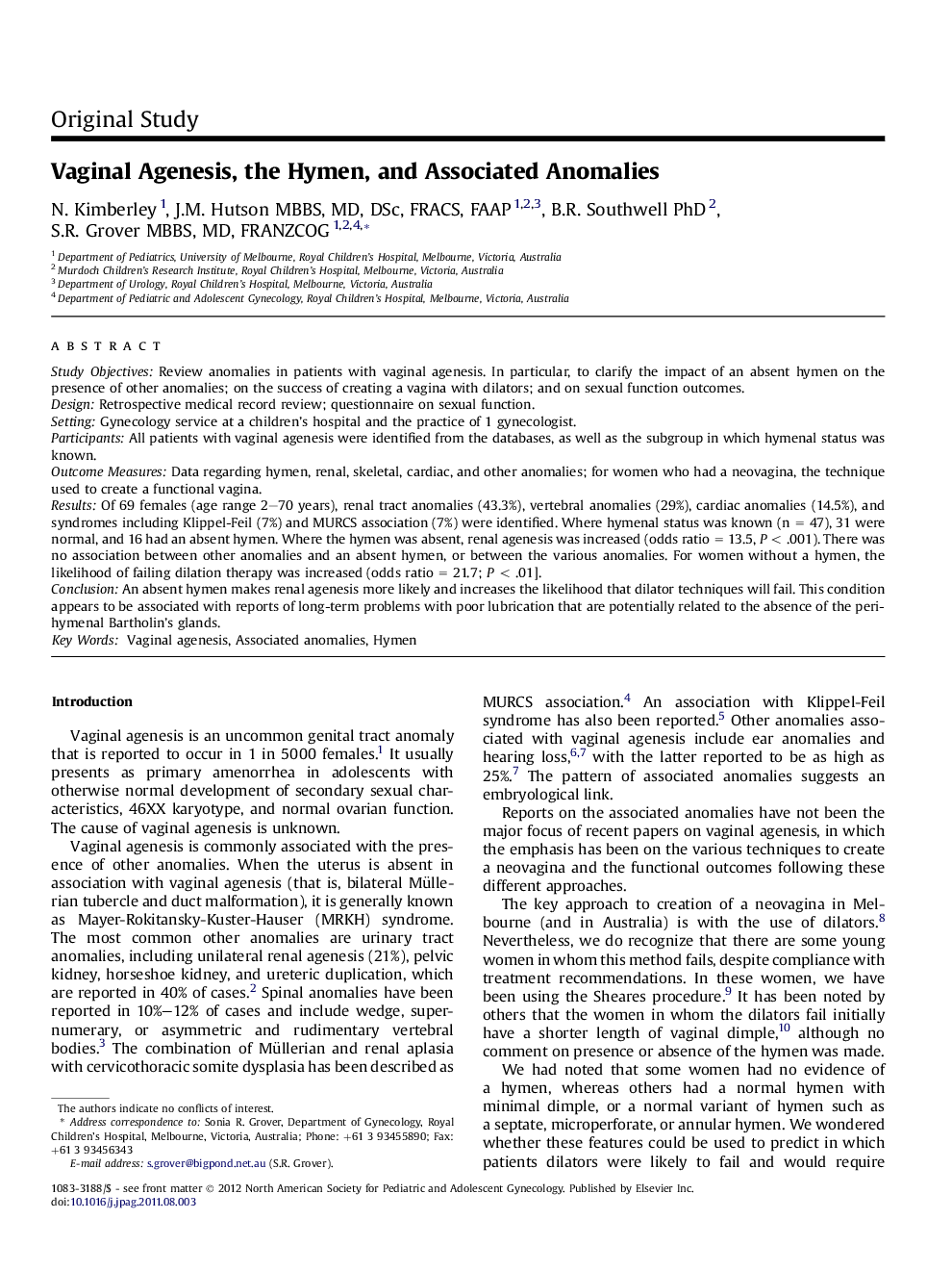| Article ID | Journal | Published Year | Pages | File Type |
|---|---|---|---|---|
| 3959363 | Journal of Pediatric and Adolescent Gynecology | 2012 | 5 Pages |
Study ObjectivesReview anomalies in patients with vaginal agenesis. In particular, to clarify the impact of an absent hymen on the presence of other anomalies; on the success of creating a vagina with dilators; and on sexual function outcomes.DesignRetrospective medical record review; questionnaire on sexual function.SettingGynecology service at a children’s hospital and the practice of 1 gynecologist.ParticipantsAll patients with vaginal agenesis were identified from the databases, as well as the subgroup in which hymenal status was known.Outcome MeasuresData regarding hymen, renal, skeletal, cardiac, and other anomalies; for women who had a neovagina, the technique used to create a functional vagina.ResultsOf 69 females (age range 2–70 years), renal tract anomalies (43.3%), vertebral anomalies (29%), cardiac anomalies (14.5%), and syndromes including Klippel-Feil (7%) and MURCS association (7%) were identified. Where hymenal status was known (n = 47), 31 were normal, and 16 had an absent hymen. Where the hymen was absent, renal agenesis was increased (odds ratio = 13.5, P < .001). There was no association between other anomalies and an absent hymen, or between the various anomalies. For women without a hymen, the likelihood of failing dilation therapy was increased (odds ratio = 21.7; P < .01].ConclusionAn absent hymen makes renal agenesis more likely and increases the likelihood that dilator techniques will fail. This condition appears to be associated with reports of long-term problems with poor lubrication that are potentially related to the absence of the peri-hymenal Bartholin’s glands.
